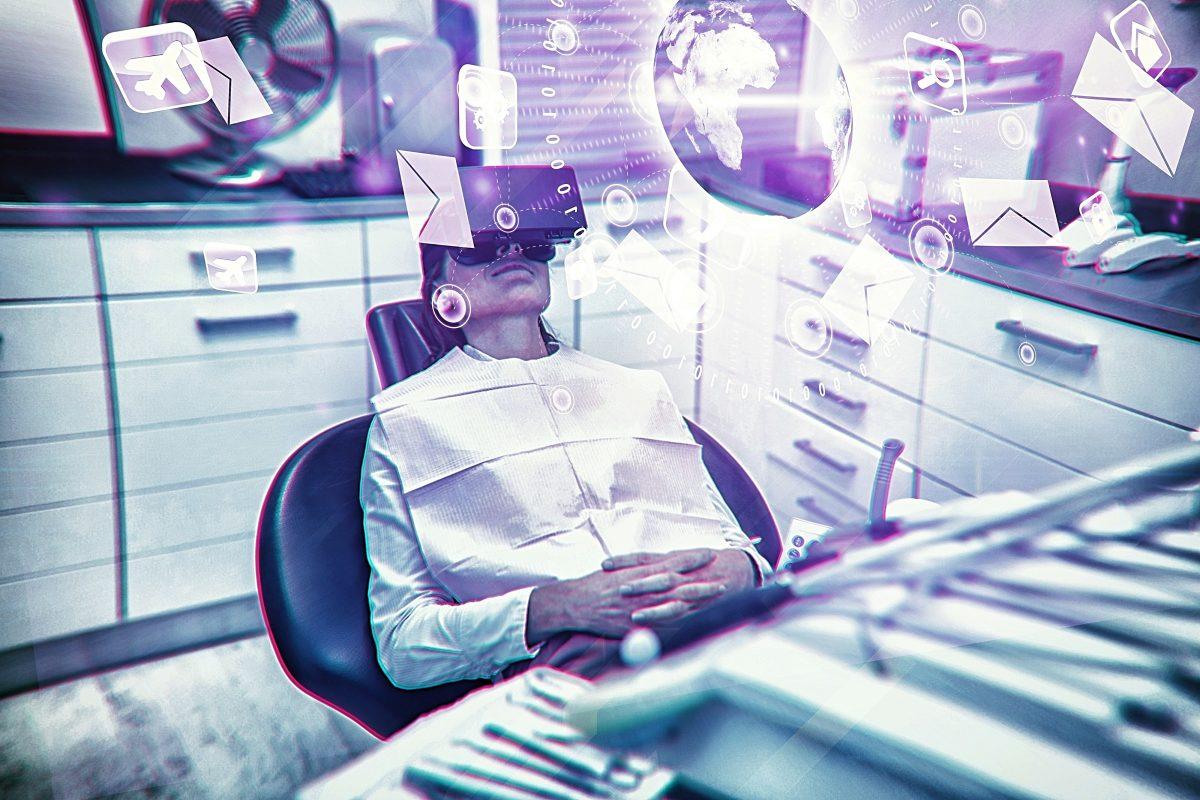Healthcare, growing to $10 Trillion US globally, lags behind nearly 80% of other industries in innovative technology adoption, and in fact is at the bottom five across industries.
copyright by www.forbes.com
 Healthcare, growing to $10 Trillion US globally, lags behind nearly 80% of other industries in innovative technology adoption, and in fact is at the bottom five across industries. However this is about to change in the next three years. From the WEF Future of Jobs Report, by 2022, adoption forecasts include: 87% big data, 87% biotech, 80% machine learning (a form of AI), 73% wearable technologies, 67% each for blockchain / IoT / AR-VR, 53% 3D printing, 47% stationary robots, and 40% non-human robots.
Healthcare, growing to $10 Trillion US globally, lags behind nearly 80% of other industries in innovative technology adoption, and in fact is at the bottom five across industries. However this is about to change in the next three years. From the WEF Future of Jobs Report, by 2022, adoption forecasts include: 87% big data, 87% biotech, 80% machine learning (a form of AI), 73% wearable technologies, 67% each for blockchain / IoT / AR-VR, 53% 3D printing, 47% stationary robots, and 40% non-human robots.
This became a focused area of discussion at the W2O hosted session in March at SxSW “EQ in the ER: Building Empathy Through XR” which is now available on video and follow-up podcast . Anita Bose , Chief Business Development Officer, W2O Group moderated a highly interactive dialogue with Rasu Shrestha MD MBA Chief Strategy Officer and EVP Atrium Health and myself. We explored: what are the opportunities, challenges, investments, frontier examples and issues in healthcare such as ethics, genetic editing, big data, extended reality, AI and machine learning, biotechnology, wearables, blockchain, IoT, robots, quantum computing, 3D printing, empathy in the medical context, opioid management, aging, and much more.
Dr. Shrestha provided a multi-faceted and nuanced discussion on how enabling technology can be in providing enhanced caring and empathy (deep EQ / emotional quotient) in healthcare with specific examples from his considerable insights in the medical system. This addressed the title about EQ in the ER: Building Empathy Through XR. EQ meaning emotional quotient and ER equating to the emergency room however in all contexts during the SXSW session.
Getting into more specifics. XR (extended reality) is the umbrella term for Virtual Reality (AR) + Augmented Reality (VR) + Mixed Reality (MR). The XR marketplace is about $30B US for 2018 and more than $200B in three years. VR are the wearable goggles where you are totally immersed in a virtual (imaginary) environment and available widely in gaming for several years. AR are the games (Pokémon) and graphics tools (Snapchat) you see on most smartphones where you can overlay virtual objects with real objects. An example of MR would be the new Microsoft HoloLens 2 released in this year where the virtual objects are anchored and seamless with physical ones where you can interact directly with both. XR provides for training of patients and medical staff, can be used in pain management and in operating rooms. Moreover, good healthcare can be threatened by bias, where implicit prejudices could be a matter of life or death. But the extended reality (XR) spectrum – AR, VR and MR – can allow us to see beyond our own biases and foster empathy with people who are different than ourselves.[…]
read more – copyright by www.forbes.com


Healthcare, growing to $10 Trillion US globally, lags behind nearly 80% of other industries in innovative technology adoption, and in fact is at the bottom five across industries.
copyright by www.forbes.com
This became a focused area of discussion at the W2O hosted session in March at SxSW “EQ in the ER: Building Empathy Through XR” which is now available on video and follow-up podcast . Anita Bose , Chief Business Development Officer, W2O Group moderated a highly interactive dialogue with Rasu Shrestha MD MBA Chief Strategy Officer and EVP Atrium Health and myself. We explored: what are the opportunities, challenges, investments, frontier examples and issues in healthcare such as ethics, genetic editing, big data, extended reality, AI and machine learning, biotechnology, wearables, blockchain, IoT, robots, quantum computing, 3D printing, empathy in the medical context, opioid management, aging, and much more.
Dr. Shrestha provided a multi-faceted and nuanced discussion on how enabling technology can be in providing enhanced caring and empathy (deep EQ / emotional quotient) in healthcare with specific examples from his considerable insights in the medical system. This addressed the title about EQ in the ER: Building Empathy Through XR. EQ meaning emotional quotient and ER equating to the emergency room however in all contexts during the SXSW session.
Getting into more specifics. XR (extended reality) is the umbrella term for Virtual Reality (AR) + Augmented Reality (VR) + Mixed Reality (MR). The XR marketplace is about $30B US for 2018 and more than $200B in three years. VR are the wearable goggles where you are totally immersed in a virtual (imaginary) environment and available widely in gaming for several years. AR are the games (Pokémon) and graphics tools (Snapchat) you see on most smartphones where you can overlay virtual objects with real objects. An example of MR would be the new Microsoft HoloLens 2 released in this year where the virtual objects are anchored and seamless with physical ones where you can interact directly with both. XR provides for training of patients and medical staff, can be used in pain management and in operating rooms. Moreover, good healthcare can be threatened by bias, where implicit prejudices could be a matter of life or death. But the extended reality (XR) spectrum – AR, VR and MR – can allow us to see beyond our own biases and foster empathy with people who are different than ourselves.[…]
read more – copyright by www.forbes.com
Share this: